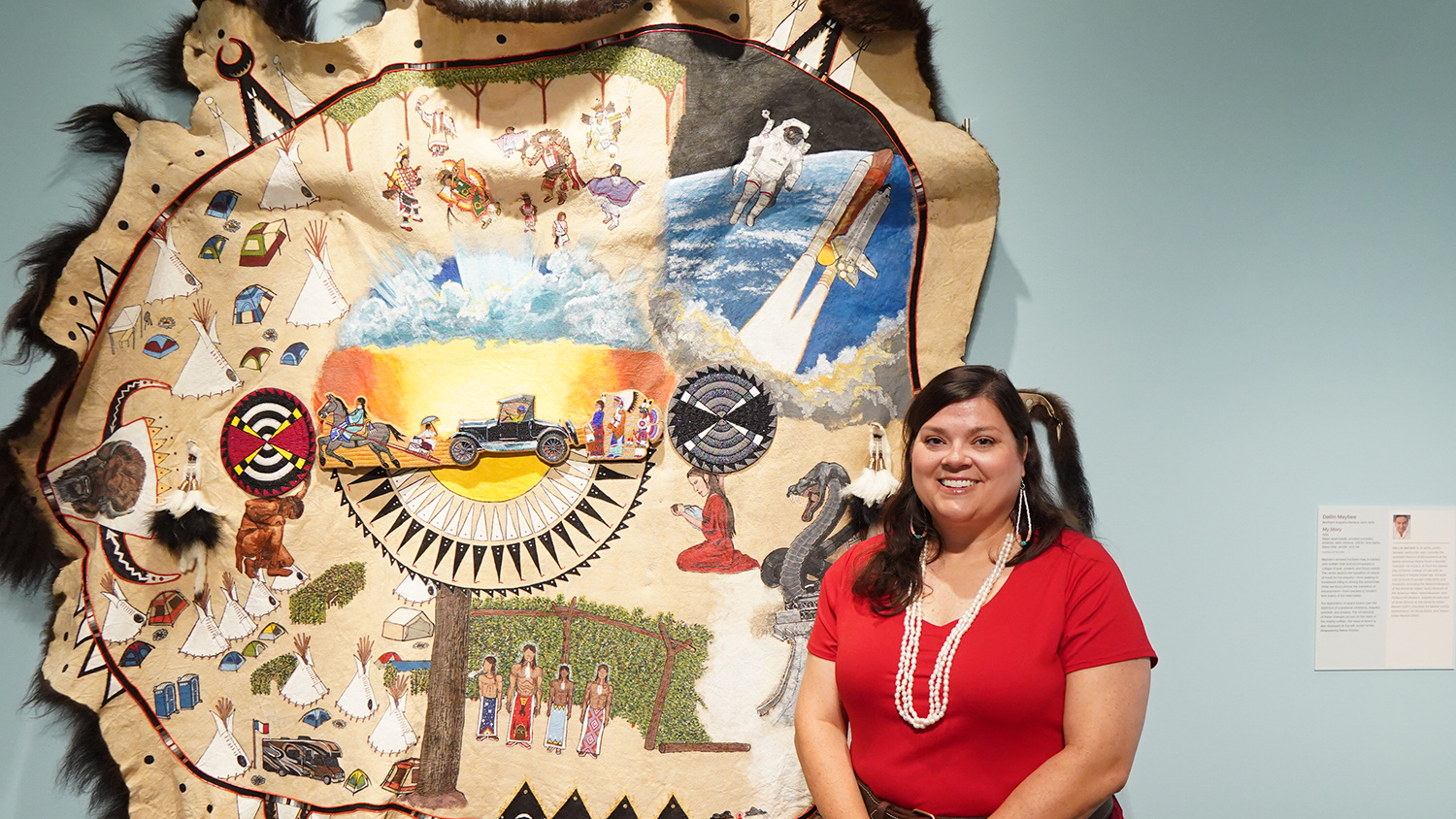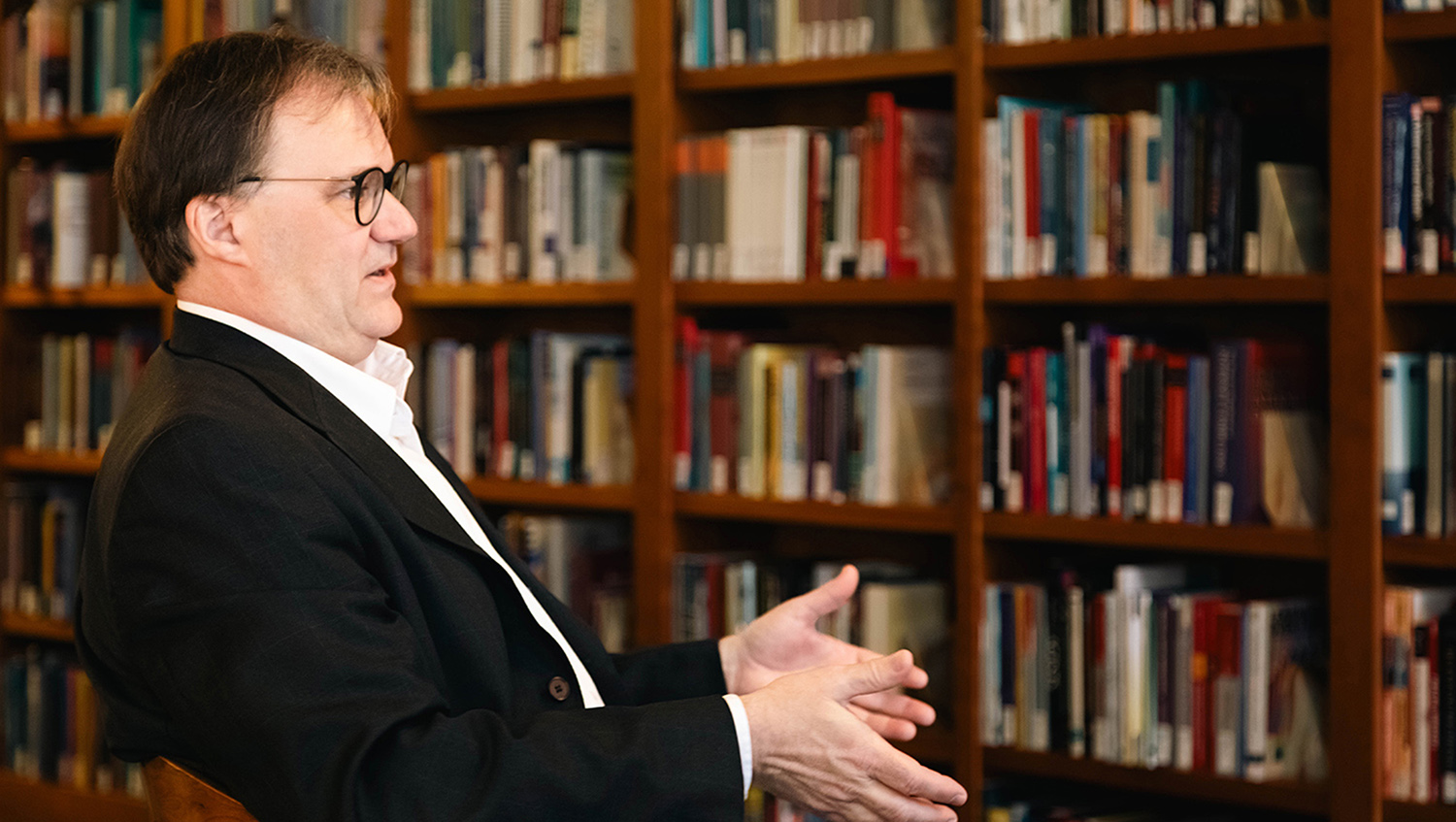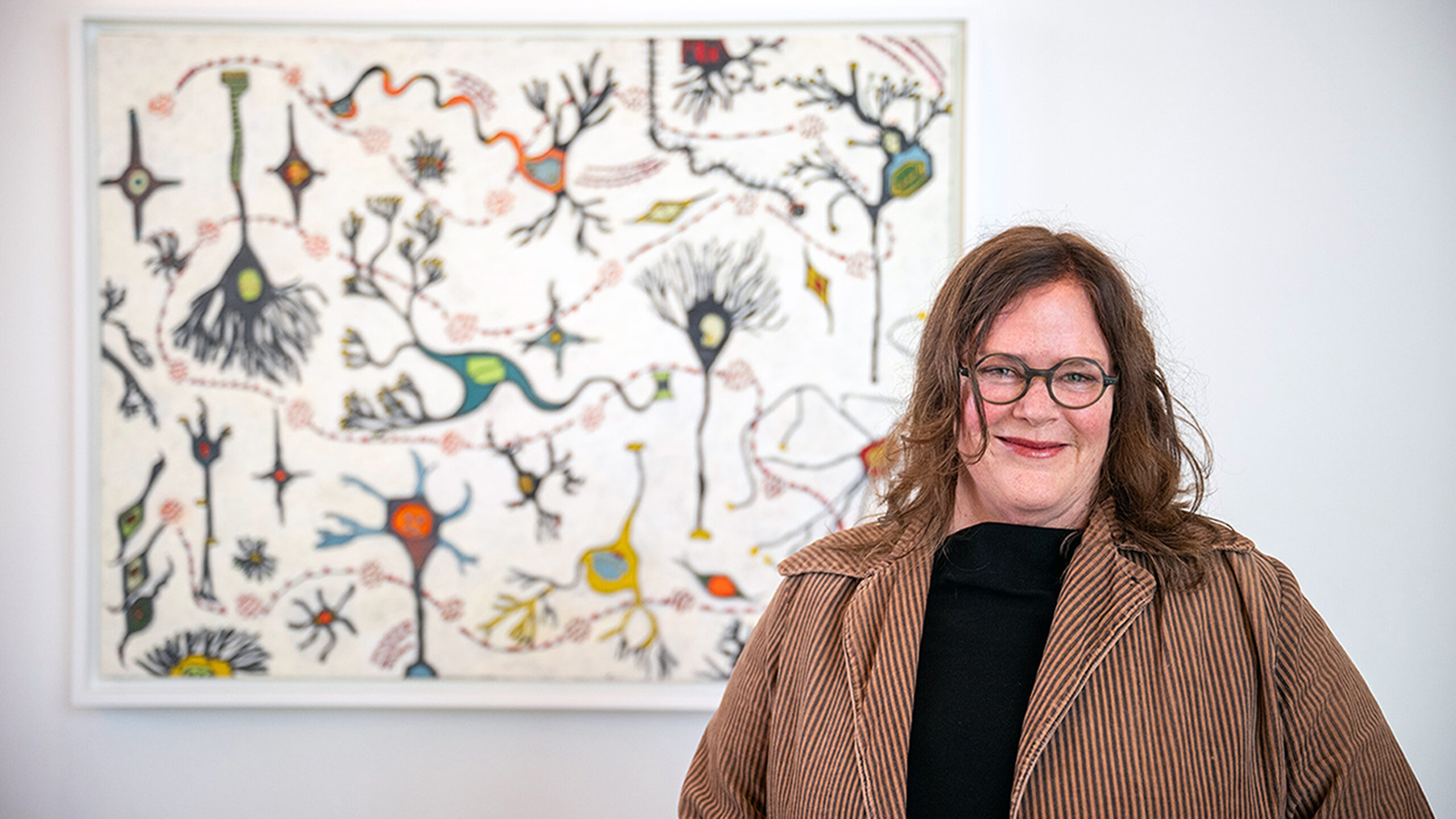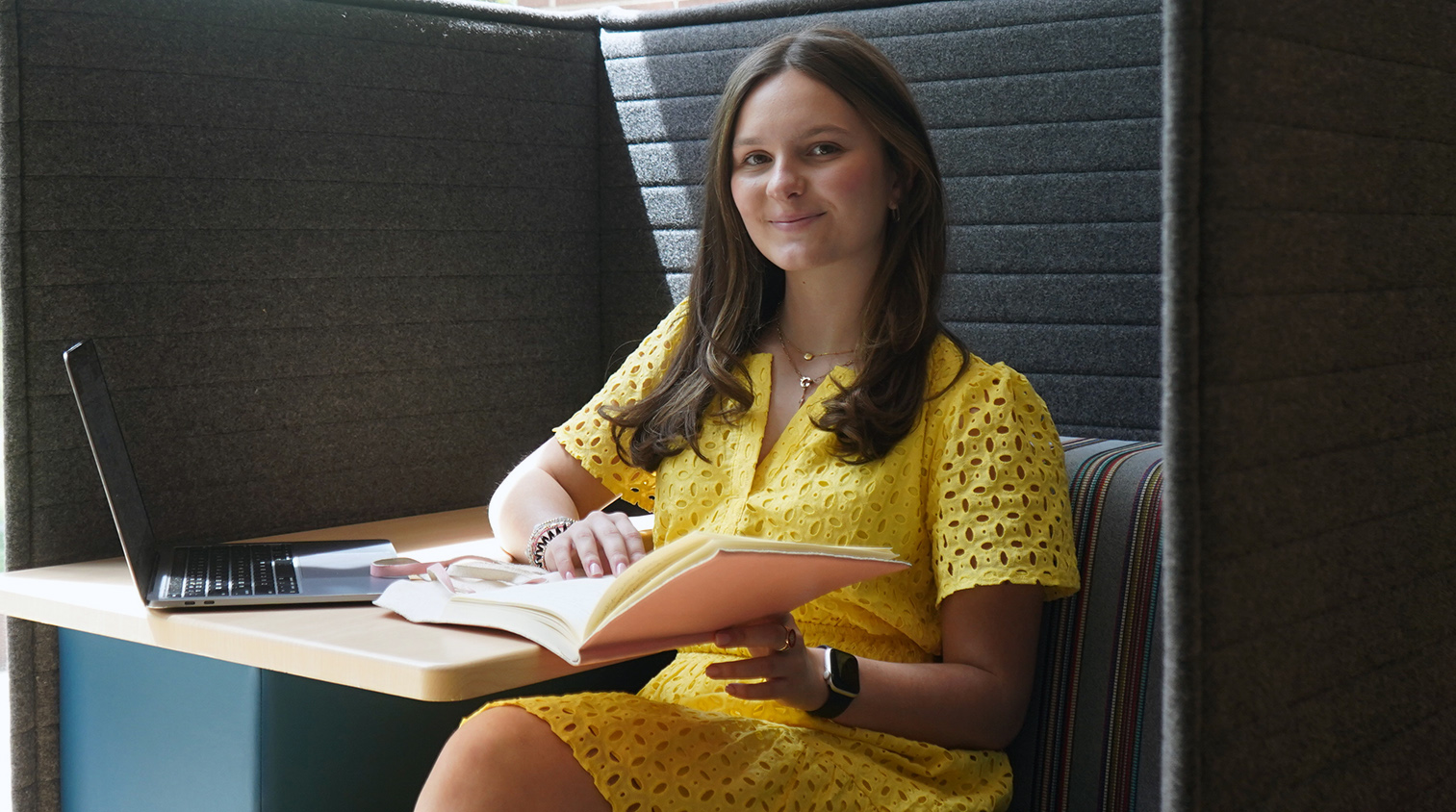Exhibiting Creativity
Harnessing the Arts as a Catalyst for Change
Amid the North Carolina Museum of Art galleries, a provocative exhibit recently unfolded that enriched our understanding of diverse cultures and highlighted how the humanities harness the arts to address complex societal challenges.
NC State public history doctoral student Nancy Strickland Fields was the guest curator of the exhibit, To Take Shape and Meaning: Form and Design in Contemporary American Indian Art. On display at the Raleigh museum this summer, the exhibit featured works by 75 Indigenous artists from more than 50 tribes throughout the U.S. and Canada, including eight from North Carolina.
More than 90, three-dimensional items were displayed, from baskets and pottery to jewelry and fashion, including a beaded pair of Christian Louboutin shoes. There was even a piece created from a Chevrolet El Camino. Together, they formed a space where cultural heritage preservation met contemporary discourse and public engagement.
“Through the curation and the art selected, audiences experienced a wide view of history and how history is relevant to Native people today,” says Fields, a member of the Lumbee tribe. “The art represents traditions, beliefs, and world views, and also the harsh legacies of colonialism.”
The goal, she adds, was to create a meaningful dialogue with the public — one that helped shape visitors’ understanding of the past and present to forge a better tomorrow.
“Shaping the audience’s perception and educating them about Native art will cultivate patrons who also inspire action.”
Museum staff like arts studies alumna Sabrina Hurtado, play a pivotal role in fostering that type of community engagement. As the museum’s manager of teen and college programs, Hurtado uses innovative programming such as workshops, lectures and community outreach programs to champion the arts as an outlet for raising awareness and nurturing discussion on critical issues.
Such programs offer visitors the tools to comprehend the art and foster a deeper engagement with it, adds Hurtado, who minored in arts entrepreneurship. As an example, she points to a poetry workshop she organized in collaboration with Jameela Dallis, a local artist.
“This workshop provided teens with a safe environment to explore subjects such as racial injustice, systemic oppression, police brutality, and sexuality through intentional guidance and tools to express their emotions and thoughts toward the exhibition,” notes Hurtado. “By creating these interactive spaces for visitors, we can facilitate discussions on challenging social topics in our exhibitions and empower them when exploring our galleries.”
Other arts-based humanities disciplines such as creative writing, literature and film studies also play a crucial role in addressing today’s critical issues. Through the expressive storytelling of creative writers and the compelling narratives of filmmakers, these disciplines enrich broader discussions by challenging stereotypes, confronting historical injustices and inspiring action toward solutions.
The influence of the humanities and the arts extends beyond academic settings. At the start of this year, for instance, the White House hosted an arts summit to explore how to incorporate the humanities and arts as another instrument to help solve problems, from improving health to bridging divides.
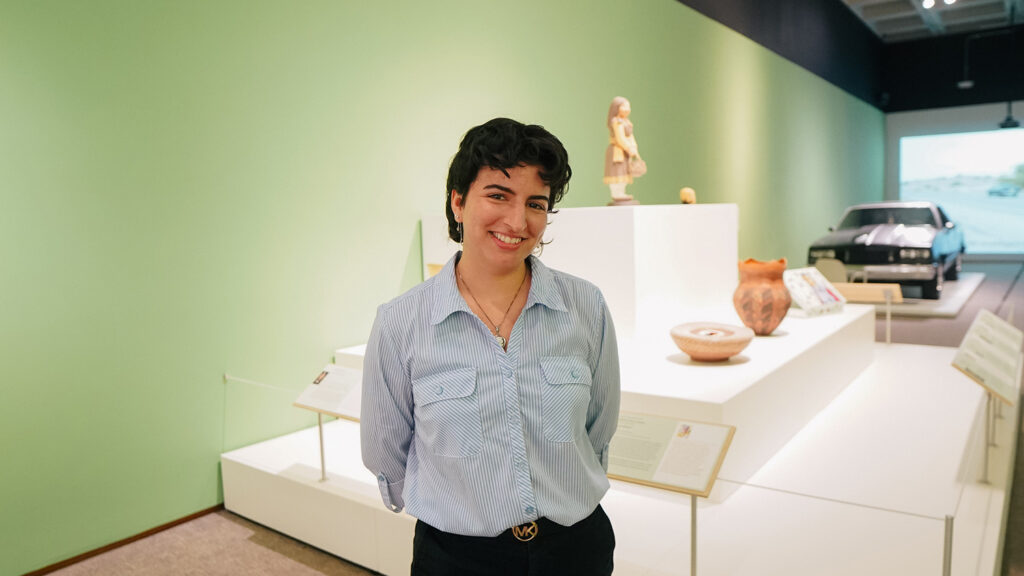
The conference grew out of a 2022 executive order from President Joe Biden. It calls for integrating the humanities and arts “into strategies, policies and programs that advance the economic development, well-being and resilience of all communities, especially those that have historically been underserved.”
The art museum’s To Take Shape and Meaning exhibit focused on one of those underserved communities. Touring the exhibit immersed onlookers in its subjects and the stories behind the art. Fields spent two years curating the pieces displayed, the museum’s first significant showcase of Native American art.
Fields’ work on the exhibit was part of an internship for her Ph.D. program. It will also be the centerpiece of her dissertation — exploring the role of art in interpreting Native American history at museums and historic sites.
The artists’ works in the exhibit centered on three main themes, including colonialism.
“Convergence, a piece by Virgil Ortiz of the Cochiti Pueblo people, was the most powerful,” says Fields, who also serves as the director and curator of the Museum of the Southeast American Indian at the University of North Carolina, Pembroke. “It empowers a difficult colonial history.”
Other pieces showed a cultural continuum, reflected in, among other things, the natural materials the artists use in creating the art. Still others, like the series of beaded punching bags by Jeffrey Gibson of the Mississippi Choctaw people, expressed the individuality of the artists.
“As a curator and museum director, I see myself as a conduit to connect Native people, Native artists, with the larger society to share concerns and affect positive change,” notes Fields. “Shaping the audience’s perception and educating them about Native art will cultivate patrons who also inspire action.”
Looking ahead, Fields says there are possible community and educational outreach plans, such as organizing a traveling exhibit or making it available to reassemble at other museums. The exhibit, she adds, has also sparked ongoing educational outreach and advocacy between the museum and the tribes of North Carolina.
- Categories:
